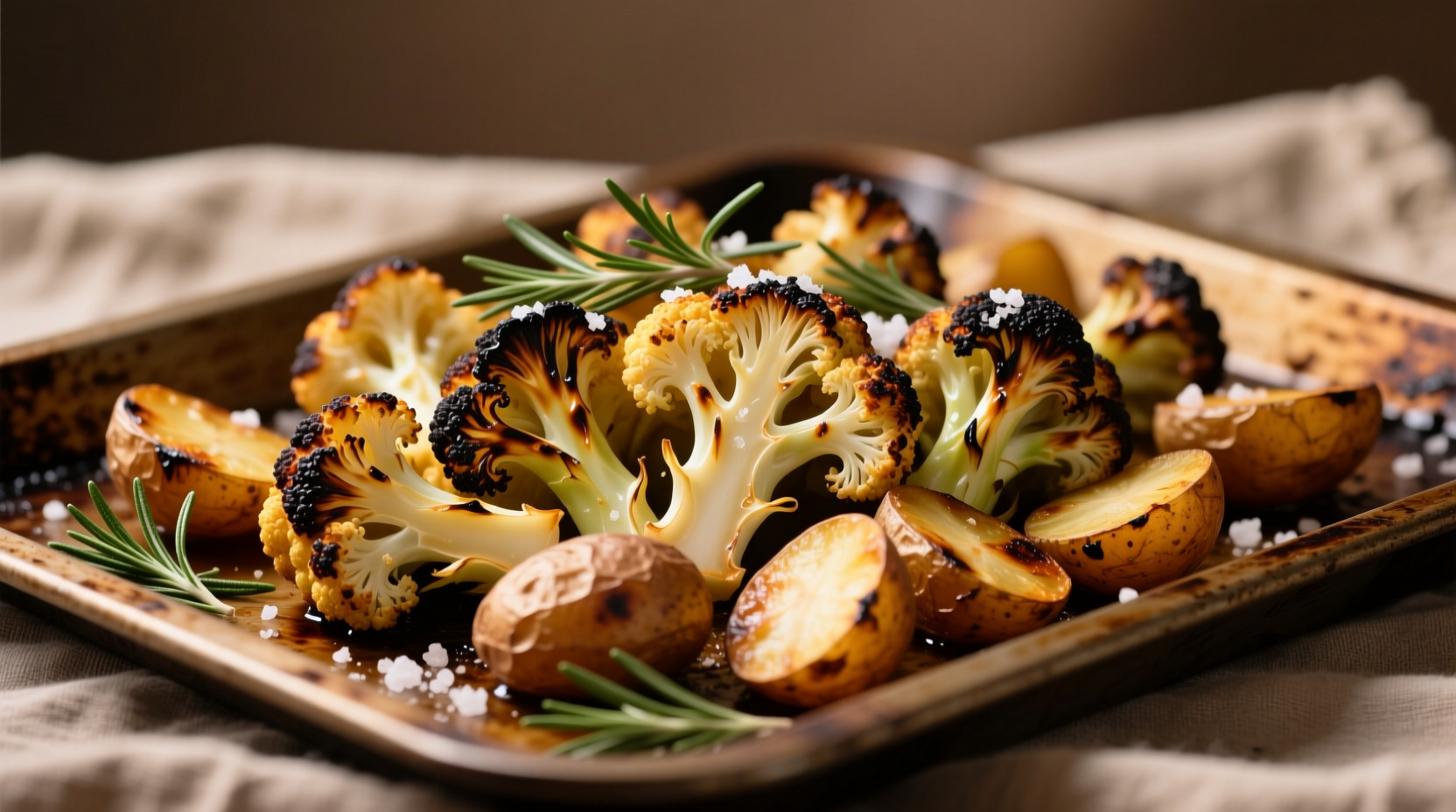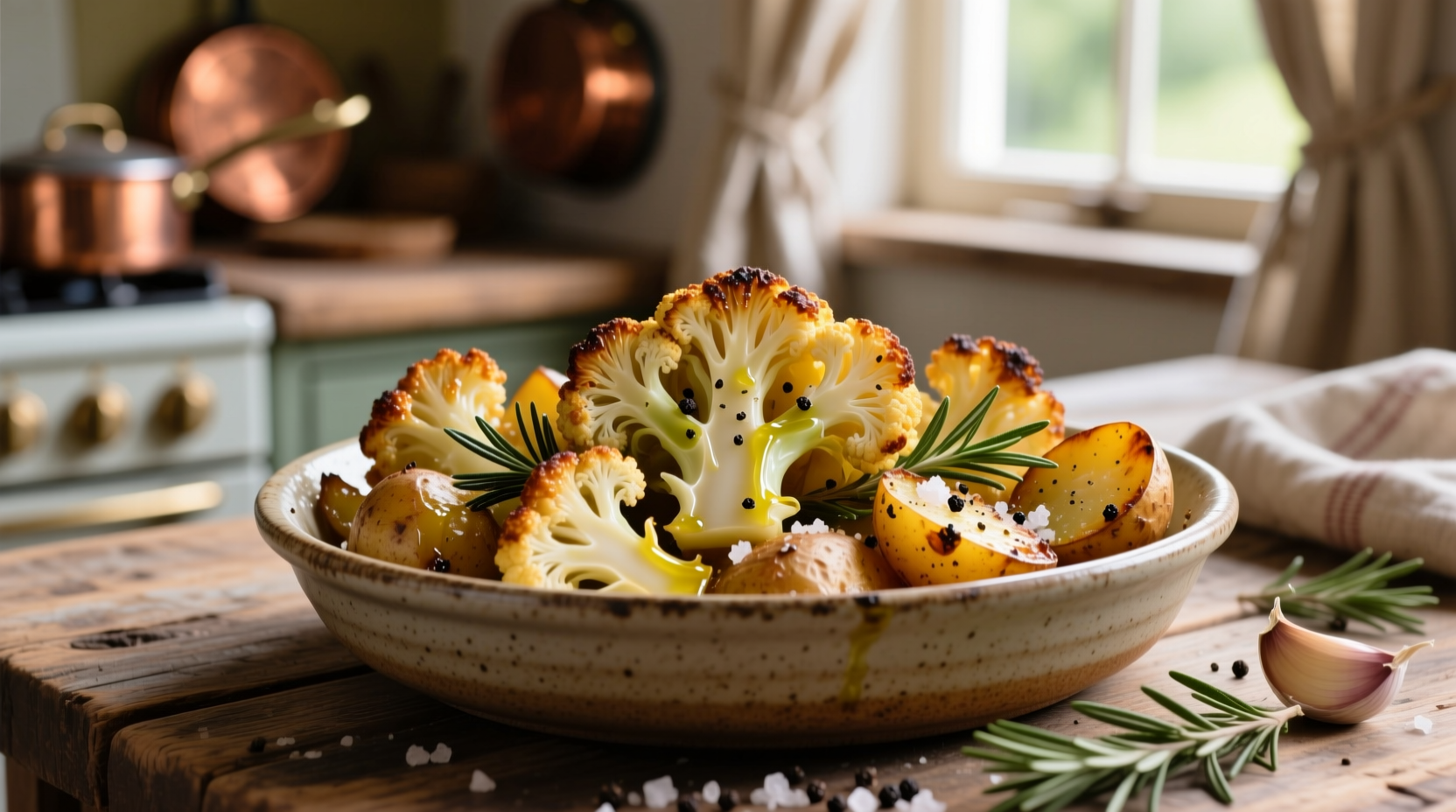Nothing beats the satisfying crunch of perfectly roasted cauliflower florets alongside golden-brown potatoes. This humble side dish transforms two ordinary vegetables into a restaurant-quality accompaniment that complements everything from grilled meats to vegetarian mains. But achieving that ideal balance of crispy exteriors and tender interiors requires understanding the science behind vegetable roasting.

Why Your Roasted Vegetables Fail (And How to Fix It)
Most home cooks struggle with soggy roasted vegetables because they miss these critical factors:
- Moisture is the enemy - Wet vegetables steam instead of roast
- Overcrowded pans create steam that prevents browning
- Insufficient oil means poor heat transfer and uneven cooking
- Low oven temperatures extend cooking time, leading to mushiness
Ingredient Selection Guide
Not all potatoes and cauliflower perform equally in the oven. Choose wisely for best results:
| Variety | Best For Roasting? | Why |
|---|---|---|
| Russet Potatoes | Yes | High starch content creates fluffy interiors with crispy edges |
| Yukon Gold | Excellent | Natural buttery flavor and balanced starch/water ratio |
| Red Potatoes | Moderate | Firm texture holds shape but less crispy than starchy varieties |
| Sweet Potatoes | Specialty | Sugar content causes faster browning; best roasted separately |
Step-by-Step Roasting Process
Follow this professional chef-tested timeline for perfect results:
- Prep (10 minutes): Cut potatoes into 1-inch cubes, cauliflower into uniform florets
- Dry thoroughly: Pat vegetables completely dry with paper towels
- Seasoning (2 minutes): Toss with olive oil, salt, pepper, and chosen spices
- Arrange properly: Spread in single layer with space between pieces on parchment-lined sheet
- Roast (35-45 minutes): 425°F (220°C), flipping halfway through cooking
- Finish (2 minutes): Broil briefly for extra crispness if needed
Flavor Variations Worth Trying
Elevate your roasted cauliflower and potatoes with these chef-approved combinations:
- Mediterranean Style: Toss with garlic, rosemary, and lemon zest before roasting
- Smoky Paprika Blend: Mix smoked paprika, cumin, and a touch of cayenne
- Herbes de Provence: Combine dried thyme, oregano, marjoram, and lavender
- Lemon-Pepper Finish: Squeeze fresh lemon juice and add cracked pepper after roasting
Avoid These Common Mistakes
Even experienced cooks make these errors when preparing roasted cauliflower and potatoes:
- Using wet vegetables - Always dry thoroughly after washing
- Overcrowding the pan - Use two sheets if necessary for proper air circulation
- Stirring too frequently - Flip only once halfway through cooking
- Adding salt too early - Salt draws out moisture; add during tossing stage
- Using insufficient oil - 2 tablespoons per pound is the minimum for proper crisping
Serving and Storage Tips
Maximize enjoyment of your roasted vegetables with these professional recommendations:
- Serve immediately for peak crispness - they lose texture quickly as they cool
- Pair with proteins like roasted chicken, grilled salmon, or baked tofu
- Storage: Keep leftovers in airtight container in refrigerator for up to 3 days
- Reheating: Restore crispness by reheating in 400°F (200°C) oven for 10-15 minutes
- Revive leftovers by tossing with fresh herbs and a splash of olive oil before reheating
Frequently Asked Questions
Can I roast cauliflower and potatoes together?
Yes, but cut potatoes slightly smaller than cauliflower florets since potatoes take longer to cook. This ensures both vegetables finish roasting at the same time with perfect texture.
Why are my roasted vegetables soggy?
Sogginess typically occurs when vegetables aren't dried properly before roasting, the oven temperature is too low, or the baking sheet is overcrowded. Always dry vegetables thoroughly, roast at 425°F (220°C), and leave space between pieces for proper air circulation.
What's the best oil for roasting vegetables?
Extra virgin olive oil works well for roasting at 425°F (220°C), but for higher temperatures, use avocado oil which has a higher smoke point. Avoid oils with strong flavors that might overpower the vegetables' natural sweetness.
How do I prevent burnt edges on roasted cauliflower?
Cauliflower burns easily due to its high sugar content. Prevent burning by cutting florets uniformly, avoiding overcrowding, and flipping halfway through cooking. If edges start browning too quickly, reduce oven temperature to 400°F (200°C) for the remainder of cooking time.
Can I make roasted cauliflower and potatoes ahead of time?
For best results, roast vegetables just before serving. However, you can prepare them up to 24 hours ahead, store in the refrigerator, and reheat in a 400°F (200°C) oven for 10-15 minutes to restore crispness. Avoid microwaving as it makes vegetables soggy.











 浙公网安备
33010002000092号
浙公网安备
33010002000092号 浙B2-20120091-4
浙B2-20120091-4